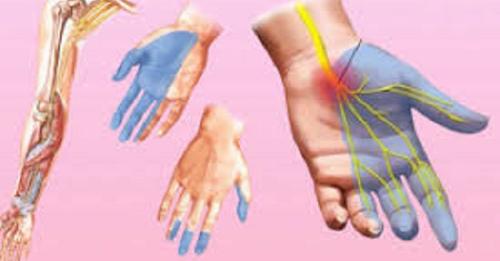In America, between three and six million people, or one in every fifty, suffer from fibromyalgia, a syndrome characterized by debilitating pain throughout the body without any obvious cause. Although people often improve over time, it is often something they will have to face for life.
If you have chronic muscle pain, however, it does not necessarily mean that you have fibromyalgia. If you are concerned that you may have fibromyalgia, it is important to keep in mind that there are many other symptoms that accompany muscle pain. Take a look at the signs and symptoms below to get a better understanding.
Symptoms of fibromyalgia
If you find that your muscles are sore on a constant basis without obvious external causes, consult this list of symptoms to help you determine if you could have fibromyalgia
All the symptoms are unlikely to match, but if most of them resonate with you, then bring your concerns to the doctor who will be able to rule out all other causes first.
Muscles and
muscle tissues Spasm muscles
Morning stiffness
Swelling
Mild and intense pains that can move to different parts of the body
Soft and knotty breasts (fibrocystic breast, like an overlap)
Sleep problems
Tiredness
Grinding of teeth
even during sleep
Feeling Falling asleep (“Starts sleep”)
Difficulty sleeping / broken sleep, leaving you tired and apathetic every morning rather than refreshed.
Allergic and sinus disorders
Ringing ears Thick
mucus
Itchy ears and earaches
Nose drip and post nasal drip
Allergies, sensitivity to molds and yeasts
Shortness of breath
Stomach problems and digestion
Swelling, nausea, abdominal cramps and pelvic pain
Frequent urination (always need to pee, get up every night, often more than once)
IBS
Sensory Problems and Sensitivity
Sensitive to odors, light, noise, temperature, pressure and climate change.
Difficulty with night driving and seeing in poor lighting conditions
Cognitive difficulties
Poor coordination and balance
Directional difficulties and recognizing familiar environments
Exclude often, difficulty concentrating, short-term memory and differentiation between certain shades of color.
Burning or tingling in the upper limbs
Impaired language and difficulty speaking familiar words
Reproductive problems
Loss of libido
Impotence
PMS and other menstrual problems
Problems
cardiac Irregular heartbeat Problems with
valves
pain similar to a heart attack
hair, skin and nails
Nails or overprinted nails sagging under the
skin that bruises or scars easily or appears mottled
Hair Loss
Mental Health Symptoms
Anxiety, depression, panic attacks
Unexplained mood swings and irritability
Other symptoms
Family history
Unexplained weight gain or weight loss
Carbohydrates and chocolate cravings
Headaches and migraines
Visual changes
Sweating
Remember that all these signs and symptoms are not specific, which means that they can be caused by or indicate another condition, or they could be random and mean absolutely nothing. For example, just because PMS occur, from time to time they are moody, have cravings, or experience migraines, does not mean that you have fibromyalgia. Once again, talk to your doctor before jumping to any conclusion.
How is fibromyalgia diagnosed?
Unfortunately, fibromyalgia can be confused with other conditions, and there are no specific tests that can give one hundred percent certain diagnoses, making diagnosis difficult.
First of all, you must meet the specific criteria set by the American College of Rheumatology to receive a diagnosis of fibromyalgia.
Widespread pain that has been present for at least 3 months in all four quadrants of the body
11 out of 18 painful points, with pain felt when palpated on those points
Negative results for any other disease on any of the diagnostic tests performed
Because there is no a test that can determine if someone has fibromyalgia, doctors use a combination of diagnostic tests to help rule out other conditions and make the cause of the disease stronger.



